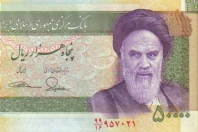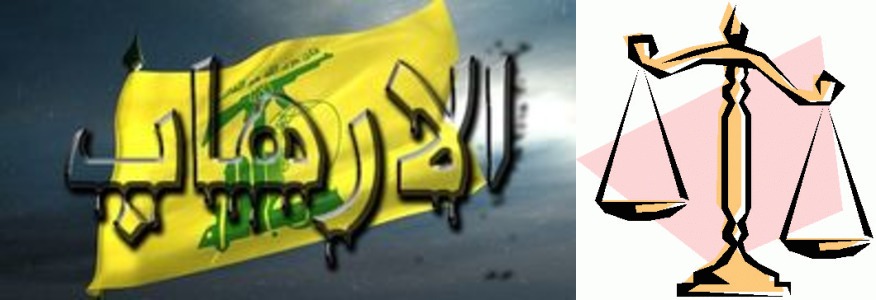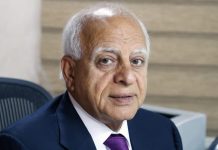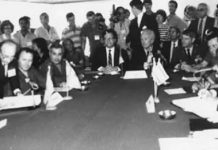Iran’s ‘Frozen’ Assets: Exaggeration on Both Sides of the Debate
Patrick Clawson/Washington Institute/September 02/15
Before the nuclear deal was signed, the freezing of Iranian assets was incomplete, so the loosening of restrictions on these assets will have less impact than implied by past and current arguments. The Obama administration has long overstated the extent to which economic sanctions froze Iranian assets and the impact these actions had on the regime. Now the administration is facing the flip side of that overstatement, as critics of the nuclear deal exaggerate how much will be unfrozen and what that will mean for Tehran’s ability to fund dangerous actors and activities in the region.
FROZEN OR RESTRICTED?
Some Iranian assets are frozen, that is, they cannot be used by their owners (whether the Iranian government or other entities). The Treasury Department’s most recent “Terrorist Assets Report” cites $1.973 billion of Iranian financial assets frozen in the United States, and $19 million of unfrozen assets (e.g., funds belonging to Iran’s UN mission, which are protected by diplomatic immunity). Due to problems evaluating the worth of real estate, the report’s figures do not include tangible property (e.g., 650 Fifth Avenue in New York City, a building worth at least $800 million, which a court has ordered frozen). Other Iranian assets are subject to such heavy restrictions that they might as well be frozen. When the EU adopted tight restrictions on financial transactions with the Islamic Republic, Iranian banks and companies could not access money they had in Europe or were owed by Europeans. A prominent example is the $2.3 billion that Shell says it owes the National Iranian Oil Company (NIOC) for crude supplies delivered before the restrictions took effect (oil is typically paid for thirty or more days after delivery).
But the largest funds often described as frozen are those held in the central banks of countries to which Iran has recently been selling oil, especially China, Japan, India, and South Korea. These assets total at least $50 billion, and by some accounts more. Iranians are learning how to use these funds to purchase items in the countries where they are being held; that is, most of the restrictions only prevent use of the money to buy goods from third countries. Both Treasury Secretary Jacob Lew and Central Bank of Iran (CBI) governor Valiollah Seif have stated that $20 billion or more of these restricted funds are already committed for future Iranian purchases, arguing that this money should not be included in any calculation of assets that will become available to Iran once the nuclear deal is implemented. A different way of interpreting this fact is that the funds in question were never really frozen in the first place, illustrating how Iran retained substantial access to foreign markets well before the nuclear deal was signed. This is especially true in the case of China: Iranians have been able to spend more than $20 billion of oil revenues held in Chinese banks, using them to purchase Chinese goods and services.
REAL OR BOOK ENTRIES?
Some of the assets declared on the books of Iranian entities are actually worth much less than their declared value. For example, the CBI’s books presumably carry Tehran’s multibillion dollar loans to the Central Bank of Syria, which are unlikely to be repaid. And NIOC has acknowledged problems with some of its declared assets tied to energy projects abroad. Treasury Secretary Lew has referred to “tens of billions in additional funds [that] are non-performing loans to Iran’s energy and banking sector.” CBI vice governor Gholamali Kamyab has noted that firms under the supervision of Iran’s Oil Ministry lent $22.4 billion for securing energy projects in China, “but now [the borrowers] do not have the ability to repay them, and in Budget Law for the current year they are given a two-year moratorium”; his statements raise the possibility that these loans are worth much less than $22.4 billion. Other statements by CBI Governor Seif suggest that the bank lent NIOC billions of dollars in foreign exchange for oil investments. If so, it is not clear how to place a value on these loans today. And whatever the extent of these dubious assets, the reality is that the losses occurred before the nuclear deal, so it was an exaggeration to include them when totaling up assets frozen pre-deal.
IRANIAN OR IRANIAN GOVERNMENT?
Other pre-deal exaggerations included the suggestion that the Iranian government bore the full burden of asset freezes. In fact, most of the frozen assets do not belong to the government.
One such category is the assets of Iranian banks. Kamyab has stated that $10 billion in blocked funds belong to commercial banks, while other Iranian sources speak of $15 billion. Yet both figures could be understated. According to the most recent International Monetary Fund report on Iran, the country’s commercial banks held $67 billion in foreign assets as of March 2014. Some of that is presumably subject to restrictions, and this money does not belong to the Iranian government. While the most important Iranian banks are government-owned, their assets are largely matched by liabilities to their depositors, including tens of billions of dollars in foreign currency deposits by Iranians.
Another large category of restricted assets are those belonging to the CBI. Most Americans — including most analysts of Iranian affairs — are not well versed in how central banks work, leading them to conflate the government’s budget with the CBI’s foreign exchange reserves. In fact, the CBI’s foreign assets are not Iranian government money, they are assets of the CBI, and like any such assets they are matched by the bank’s liabilities. Most of these assets came from oil sales for which Asian customers paid NIOC in dollars; NIOC then sold those dollars to the CBI, which is holding them in the central banks of the Asian countries. When the CBI purchased those dollars from NIOC, it credited NIOC’s Tehran office with Iranian rials, which NIOC then distributed. In other words, the rials long ago showed up in the government accounts as revenue. What has happened to the dollars since then has complicated how the CBI manages its foreign exchange reserves, but it has no implications for the government’s budget. If the restrictions on those CBI assets held with Asian central banks are loosened post-implementation, that would not produce a single penny of revenue for the Iranian government.
It is tempting to think that when the CBI and banks have more access to foreign assets, they could lend more to the government. But in fact the government can already borrow more from banks if it is so chooses. Lending to the government is only a small portion of Iranian bank operations. The government has limited debt; the International Monetary Fund has placed it at 20% of GDP, half of which was arrears recognized only in 2014. Finance Minister Ali Tayyebnia has bemoaned the cooked books he inherited from former president Mahmoud Ahmadinejad, complaining that government debt is actually 25% of GDP. But even that figure is remarkably low by the standards of other countries, suggesting that the government could borrow much more.
If the government does in fact increase its borrowing from Iranian banks, it could cause problems. In particular, it could reduce the amount available to lend to others, including government-owned firms and other well-connected enterprises (as economists say, government borrowing might “crowd out” other borrowers). At the same time, more government spending financed by borrowing might stimulate the economy. Yet how that issue plays out will be the same whether or not sanctions are relaxed.
BENEFITS FOR IRAN’S GOVERNMENT
To be sure, while few of the so-called frozen assets belong to the government, Iranian authorities will still benefit if the nuclear deal significantly lifts restrictions on the assets of Iranian nationals, including the CBI. That is most obvious for the money owed to NIOC, such as Shell’s $2.3 billion. Past remarks by Tayyebnia and Kamyab imply that such assets total $6 billion.
Once NIOC gets these dollars, it will sell them to the CBI. Technically, the rials NIOC receives from selling dollars to the CBI do not all go to the government — the formula set by law is that, for sales at or below the budget’s price assumption, 14.5% remains with the NIOC, 20% goes to the National Development Fund (NDF), 2% goes to deprived and oil-producing provinces, and 63.5% goes to the government’s coffers.
Yet the money earmarked for provinces and the NDF is effectively money for the government — the more revenue that provinces get from oil sales, the less they need from the central government budget, and while the NDF is legally a nongovernmental public entity forbidden to lend to the government, its spending to promote development reduces what the government has to spend for the same purpose. Apparently, the government has not directly tapped the NDF for expenditures the way it did with the older Oil Stabilization Fund, which is still set to receive 85.5% of receipts from exporting oil at a price higher than the budget assumption. Yet credible reports indicate that the government is effectively reducing the NIOC’s share, in part by requiring the company to make some of the cash payments to families introduced as part of the 2011 subsidy reform. The government has also postponed what was supposed to be an increase in the NDF’s revenue share.
A clearer advantage for the government is that Iranian entities will be freer to buy from wherever they wish and use a wider array of channels, thereby facilitating dubious transactions. For instance, fewer restrictions will make it easier for the government to disguise foreign exchange transfers to Hezbollah. To date, however, Tehran does not appear to have faced great difficulties transferring money to such entities, so it is not clear how much difference the unfreezing of assets would make. Of course, loosened sanctions on foreign exchange could complicate efforts to enforce restrictions on arms exports or purchases of nuclear, missile, or dual-use items.
And a greater variety of channels would help Iranian authorities — revolutionary as well as regular government — reduce the transparency of Iranian trade. In the grand scheme of things, however, this would represent only a modest advantage for the Iranian government compared to the situation it has enjoyed for the past few years. In short, the pre-deal asset freeze did not have as great an impact on the Iranian government as some statements from Washington suggested. And going forward, the post-deal relaxation of restrictions will not have as great an impact as some critics of the deal suggest.
**Patrick Clawson is the Morningstar Senior Fellow and director of research at The Washington Institute.






















